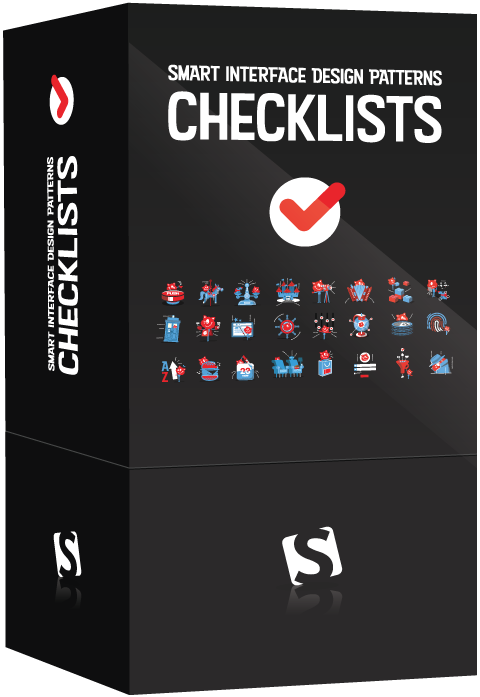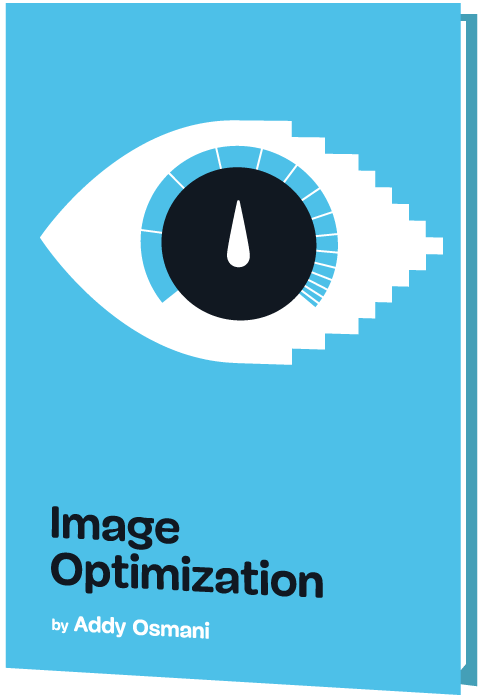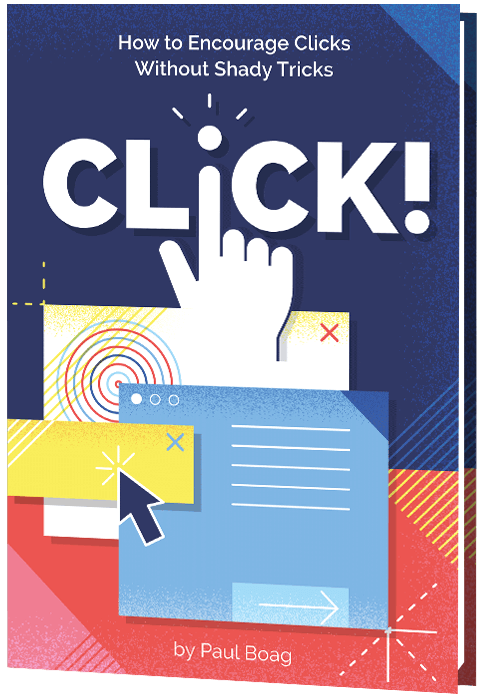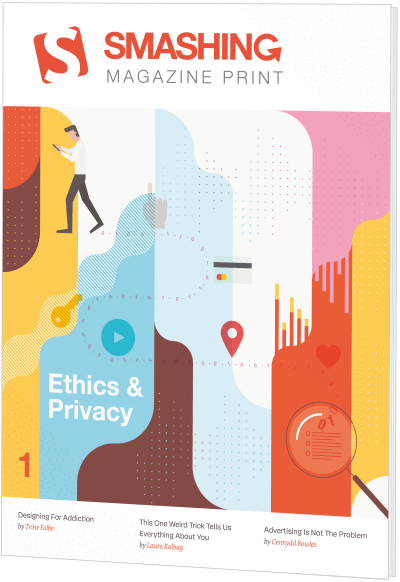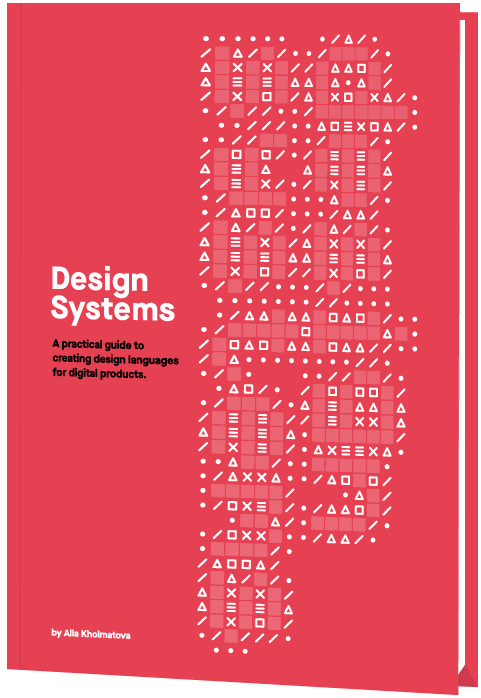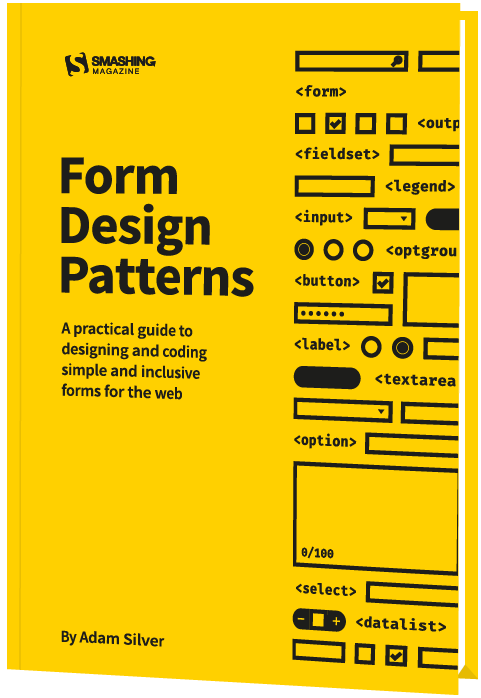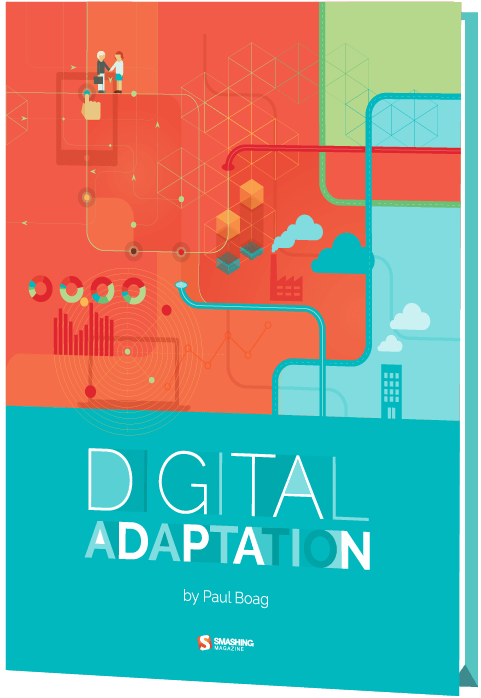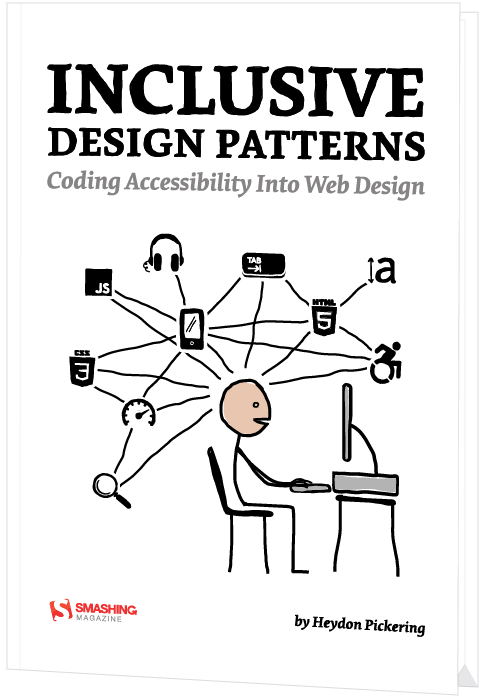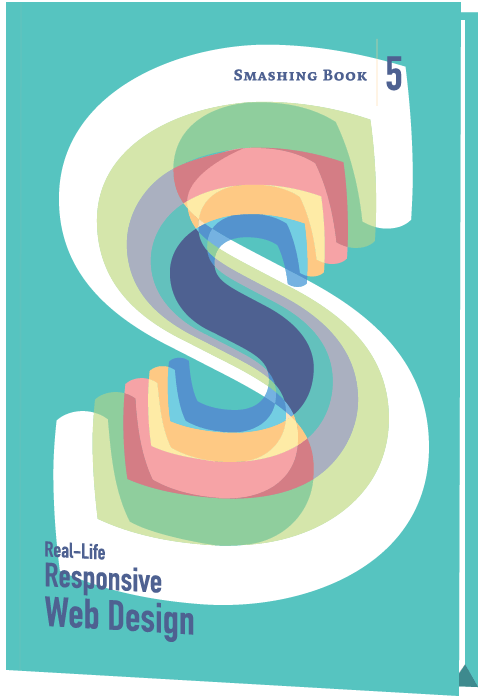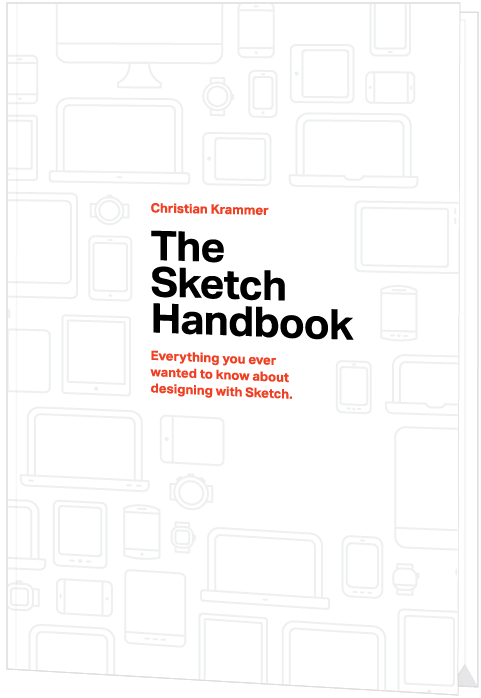Touch Design for Mobile Interfaces
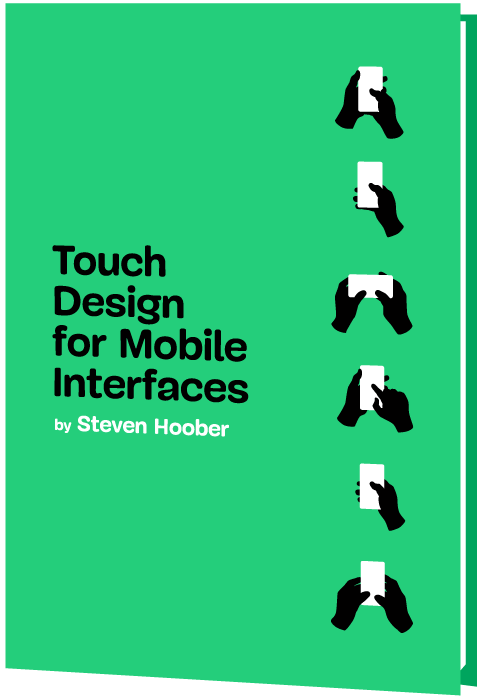
How do we design for touch in 2022? Mobile and touch are the new default for computing, but there are still many myths, rumors, errors and out-of-date practices on how to design for them. Let’s change that!
In our brand-new book Touch Design for Mobile Interfaces, Steven Hoober shares his in-depth research and guidelines on designing for touch. You’ll learn how people hold devices and interact with interfaces, along with strategies and best practices for designing better mobile interfaces. A jam-packed book for designers and developers working on interfaces for mobile. Jump to table of contents.
400 pages. High quality hardcover + eBook (PDF, ePUB, Kindle). Written by Steven Hoober. Shipping now.
We are currently unable to ship printed books to the United States due to customs clearance issues. If you have any questions, please contact us any time.
eBook
DRM-free, of course.
ePUB, Kindle, PDF.
Included with your Smashing Membership.
Download PDF, ePUB, Kindle.
Thanks for being smashing! ❤️
“Steven’s research over 20 years and his extensive knowledge of all things mobile (not just phones) shines through. His insight makes you rethink assumptions and best practices that have not evolved alongside the technology. This book is a must-have for any designer, whether new to digital design or not.”
About The Book
There are over 2 billion portable touchscreen devices in use today, and hundreds of millions more installed in cars and kiosks. Sales of traditional mouse-and-keyboard computers have been falling for years, replaced by mobile phones and tablets. Mobile is the new default, but there is a lot of myths and out-of-date practices on how touch works, and how to design for mobile.
Touch Design for Mobile Interfaces shows new insights from research on hardware, people, interactions, and environments. Steven Hoober has studied in depth how people actually touch and hold mobile phones and tablets. Steven spent over 20 years designing products for mobile phones, tablets, kiosks, and computers.
The book also includes guidelines and best practices you can apply to your designs to address usability and accessibility issues immediately. Download a free PDF sample (14MB).
400 pages. Written by Steven Hoober. Cover design by Espen Brunborg. Shipping now.

eBook
DRM-free, of course.
ePUB, Kindle, PDF.
Included with your Smashing Membership.
Download PDF, ePUB, Kindle.
Thanks for being smashing! ❤️
Table of Contents
- Defining Mobile Devices
- The first chapter describes different devices in the context of their unique attributes of portability, connectivity, and awareness. We’ll come to understand how important it is to understand mobile technology and use patterns, and become aware that mobile paradigms are influencing more traditional computing platforms.
- The History and Technology of Touch
- Chapter 2 reviews the evolution of direct screen interaction dating back to the 1950s, and the development of commercialized touch since the 1980s. Today’s devices can be better understood by learning how touch technology advanced before achieving ubiquity through capacitive touch.
- Capacitive Touch
- Chapter 3 addresses how capacitive touch intersects with human behavior and impacts our design work.
- Standards, Assumptions, and Problems
- We’ll learn how various standards, assumptions, and problems can be problematic for designers of today’s mobile touchscreens. The specifications, norms, and principles of earlier times are sometimes not to be trusted as they are too often based on technological assumptions that no longer apply.
- Finding Out How People Hold and Touch
- Chapter 5 covers the observational research Stevn Hoober conducted to discover how people actually manipulate their mobile phones and tablets in everyday use. Through debunking some widely accepted but incorrect assumptions, we’ll learn most of all to change the way we think about designing for touch, because while there are many ways to hold a device, everyone uses them all, constantly shifting from one to another.
- Touch Accuracy and the Center-Out Preference
- To understand touchscreen performance, Steven undertook several studies and found that popular notions of touch accuracy and preferred touch regions are wrong. He discusses this in chapter 6 and shows that people favor the middle of the screen for both reading and touching.
- How Fingers Get In the Way
- Every mobile device user has experienced how fingers get in the way, and in chapter 7, you’ll learn how our designs can take into account the ways people adapt their touch to perform different actions like tapping and scrolling, and to overcome problems of visibility and interactivity.
- Imprecision and Probability
- Chapter 8 covers the issues around imprecision and probability and shows how we need to design systems, interactions, and processes that prevent mistakes — especially avoiding catastrophe when mistaken taps are made.
- Phones Are Not Flat
- Mobile devices are used in all kinds of locations and people handle them constantly. People and their environments can be confusing, confounding, and unpredictable. Chapter 9 describes ways we can consider likely problems when planning the design of our apps and websites.
- People Only Touch What They See
- We start to move into tactics — with a little less theory, data, research, and background info. Chapter 10 covers best practices in how the UIs of interactive elements are designed to attract the eye, afford action, be readable, and inspire confidence that they can be safely tapped.
- 1, 2, 3: Designing by Zones
- In chapter 11, Steven introduces the concept of information design, describes how human vision is not what it appears to be, and then turns all that we’ve learned so far into a simple formula we can all use to create well-organized, usable templates for touchscreen design.
- Progressive Disclosure
- Shifting from template theory to template creation practice, in chapter 12, we’ll review the pros and cons of some of the most important page design elements, such as menus, lists, floating bars, and tabs, to see how they can integrate with the concept of information design for center-out touchscreen products.
- Practical Mobile Touchscreen Design
- We’ll finish off by skimming lightly over more or less the entire process of designing digital touchscreen products, from teams to strategy and onward. From these resources we can start building a reference library of how to pursue each aspect of the design process.

About The Author
Steven Hoober shifted focus from graphic design to mobile UX in 1999. Since then, he designed the first Google mobile search, the first mobile app store, several mobile browsers, and numerous websites and apps for global brands. See more of Steven’s research at 4ourthmobile.com.
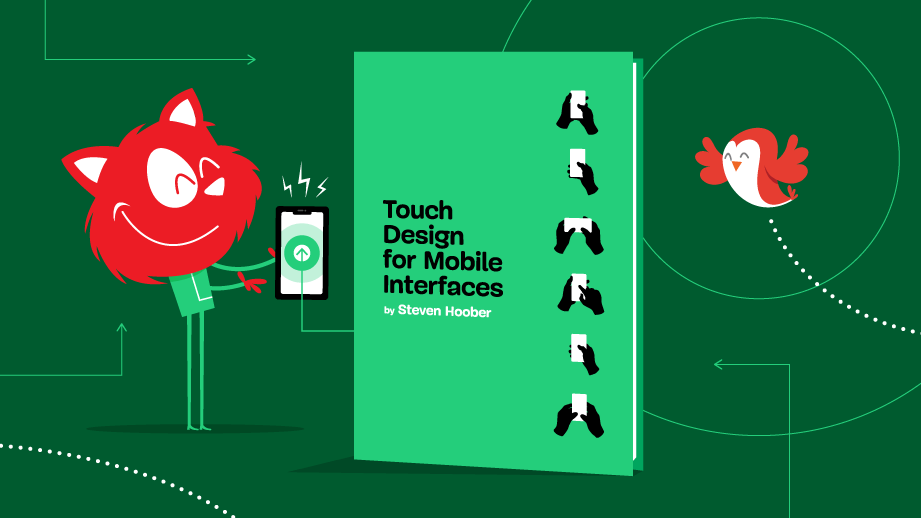
Technical Details
- 400 pages
- Quality hardcover with stitched binding and ribbon page marker
- ISBN: 978-3-945749-97-5
- Free worldwide airmail shipping from Germany. Please note that due to Covid-19 and import restrictions, there could be unexpected delays. But of course you can download the eBook and start reading right away.
- Release: November 2021
eBook
DRM-free, of course.
ePUB, Kindle, PDF.
Included with your Smashing Membership.
Download PDF, ePUB, Kindle.
Thanks for being smashing! ❤️
Frequently Asked Questions
If you have any questions, we are right here to answer them. We love our customers, and we’d love to help you in any way or just listen to your story. So please feel free to ask questions via @smashingmag on Twitter — we’ll get back to you right away. Just in case: here are answers to some frequently asked questions.
- How much does shipping cost to my country?
No shipping costs — wherever you are in the world! We ship everywhere, worldwide, via airmail shipping. What you see is what you pay. No ifs or buts.
- Delivery times to my country?
All books are shipped via airmail to keep delivery times as short as possible. You can check the anticipated delivery times for your country.
- Is the eBook included with print?
When you purchase a printed book, you’ll get a friendly discount on the eBook. All eBooks are available in usual formats — PDF, ePUB, and Amazon Kindle.
- What payment methods are accepted?
PayPal, VISA, MasterCard and American Express. Of course, we use a secure connection, with 256-bit AES encryption and a green GeoTrust Extended Validation SSL CA certificate. And no, we don’t store your credit card data on our servers. (Obviously.)
- Is there a money-back guarantee?
Yes, absolutely! No risk at all — our 100-day full money-back guarantee keeps you safe. Don’t hesitate to return your purchase. You’ll get your money back without ifs or buts!
- I have a question that is not covered here.
No worries! Please get in touch with us via the contact form. We would love to help you as soon as we possibly can!
More Books
Accessible UX Research
Success At Scale
Interface Design Checklists
166 practical cards for common interface design challenges.
Understanding Privacy
How to put your users first and make a better web.
Image Optimization
Deliver high-quality responsive images in the best format and size, and at the moment your users need them.
TypeScript in 50 Lessons
Everything you need to know about TypeScript, its type system, and all its benefits in 50 lessons.
Click!
A guide to increasing conversion and driving sales sustainably.
The Ethical Design Handbook
A practical guide on ethical design for digital products.
Inclusive Components
Handbook for building robust, accessible interfaces.
Smashing Print
A printed magazine designed to make you think.
Art Direction for the Web
Creating engaging, art-directed experiences on the web.
Smashing Book 6
Exploring new frontiers in front-end and design.
Design Systems
Create effective design systems that empower teams to create great digital products.
Form Design Patterns
Designing and coding inclusive and usable web forms.
User Experience Revolution
Help organizations understand and embrace digital.
White Hat UX
How to avoid dark patterns and improve user experience.
Digital Adaptation
Helping traditional companies embrace and make use of digital.
Inclusive Design Patterns
Creating bulletproof, accessible HTML/CSS components.
Smashing Book #5
Smart responsive design techniques from real projects.
The Sketch Handbook
Everything you need to know to understand and use Sketch.



